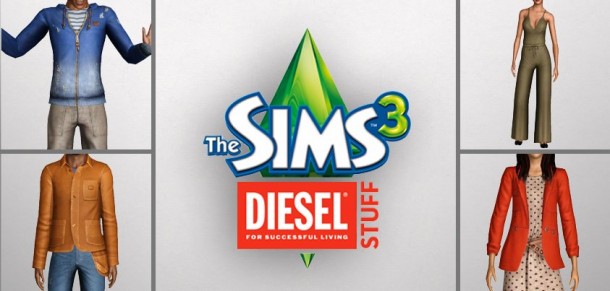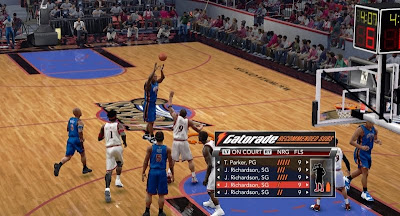The following article has been written by a fanatic researcher that conducted research about the effects of in-game advertising. I hope you enjoy it!
Even though billions of dollars are spent on in-game advertising each year and everyone in the industry has an opinion on how to use in-game advertising, very little is actually known about the actual effect of in-game advertising. In the study for my thesis I’ve tried to find out more about what in-game advertising can actually do for the advertised brand.

It was already known that in-game billboards can have an effect on memory: if you have played a game, you can sometimes remember or recognize the brand that was advertised in the game. Though this is a good thing if you want to create brand awareness, it is not a particularly spectacular finding, especially considering that not everyone could remember or recognize the advertised brands. Far from it in fact; the results indicated that in-game billboards were usually poorly remembered and recognized, suggesting that in-game advertising is not very effective at all. This seemed to justify the current cynicism that professionals have about in-game advertising, which I encountered both in news articles and in personal interviews.

However, in-game advertising can do more than just make you remember or recognize brands: simple billboards along the track of a racing game can also influence how you feel about a brand. A handful of studies indicated that if you let people play a game with billboard advertising in it and you ask them how they feel about a couple of brands afterwards, they’ll be more favourable towards the brands that were advertised in the game!
According to the psychological theory of Dual Attitudes people do not just have a single opinion of something, but people can have two opinions of any given object at the same time. And these two opinions (in social sciences we speak of attitudes) are not always the same: people have both a conscious or explicit attitude and a subconscious or implicit attitude. One of the best examples to illustrate this with is modern racism: hardly anyone will actually admit that they’re racist, because they know it is wrong. So when you ask them if the complexion of your skin should matter for how you’re judged on a job interview, they’ll tell you that it shouldn’t matter; racism is wrong. In practise however people often subconsciously act in a racist way – perhaps because black people are often associated with crime and educational disadvantages. This is why a black person may have less chance to be hired for a job than an equally qualified white person.
Knowing that in-game billboard advertising could actually change someone’s conscious, explicit attitude towards a brand, I wondered whether this was also true for their subconscious, implicit attitude. So I set up an experiment where I asked people to play a racing game for 5-10 minutes and complete some tests afterwards. They did not know what I was studying and they did not know that half of them saw in-game billboards with brand A, while the other half of them saw brand B on the very same billboards. I could then measure their implicit attitude with an IAT (Implicit Association Test).
In the IAT participants had to complete a series of tasks in which they had to categorize positive and negative terms and brand pictures. For example, participants could be shown the word ‘beautiful’ and if the category ‘good’ was shown in the left corner of the screen, they would have to click the left key. For parts of this test, participants had to categorize both good or bad terms and brands to the left and right corner. For example, participants could have the category ‘good’ and ‘brand A’ on the left side and ‘bad’ and ‘brand B’ on the right side of the screen. In this case, the participants would have to assign good terms and pictures that have to do with brand A to the same category (left). If you are a fan of brand A, you’ll have an easy time assigning good evaluative terms and pictures with brand A on it to the same category and you’ll be able to do so very quickly. If you are not a fan of brand A, you’ll have a harder time placing them in the same category and you’ll be making more mistakes and react more slowly. By pairing both brands with both good and evaluative terms in different parts of the test, this test can figure out which brand is the favourite.
According to the IAT, people prefer the brand that they’ve just been exposed to in the game significantly more than the other brand. In previous psychological studies, researchers have already found out that the implicit attitude can play a big role in influencing actual behaviour. Especially at times when people don’t really have the time or aren’t in the mood to think too much about what they’re doing, the implicit attitude will be the main thing to dictate what people actually do. This means that because you’ve played a game with an in-game advertisement for brand A, next time you’re in a hurry and in the supermarket and you want to grab a bottle of soda, you’re more likely to grab a bottle of brand A.
Though, interestingly, this effect only occurred for participants in the condition in which they had to play the game on an easy difficulty where they had to race three rounds, as fast as they could, but without traffic to avoid and opponents to beat. In the condition with the hard difficulty, where they had to avoid a lot of traffic and try to beat their opponents, participants were not influenced by the in-game advertising. It did not matter what brand they were exposed to, the results of the IAT indicated that they had no significant preference towards either brand.
As to why in-game advertising only has an effect on a lower difficulty I’m not sure yet. There are two plausible explanations: it could be that it requires so much attention to play the game on the hard difficulty setting that people no longer have the cognitive resources to be able to process the in-game billboards. And without processing the billboards, your implicit attitude will not be changed. The second possibility is that because participants were enjoying the game on the easy difficulty setting, they could subconsciously associate their positive experience to the in-game brands. And perhaps they did not have as much of a positive association on the high difficulty setting because they enjoyed it less, because they were more frustrated.
Encouraged by the interesting results, I am already working on a part 2 of this study. This time the focus will be more on comparing the effects of the explicit attitude to the implicit attitude and to find out which explanation of the effect of the difficulty level works best.
Joël Bosch
If you want to read more about using games as a marketing tool, download ‘A Brand New Playground’ for free!
Or subscribe to one of the 4 Gamification Workshops in 2014
Posted in advergame, Advertising, ingame advertising | No Comments »



